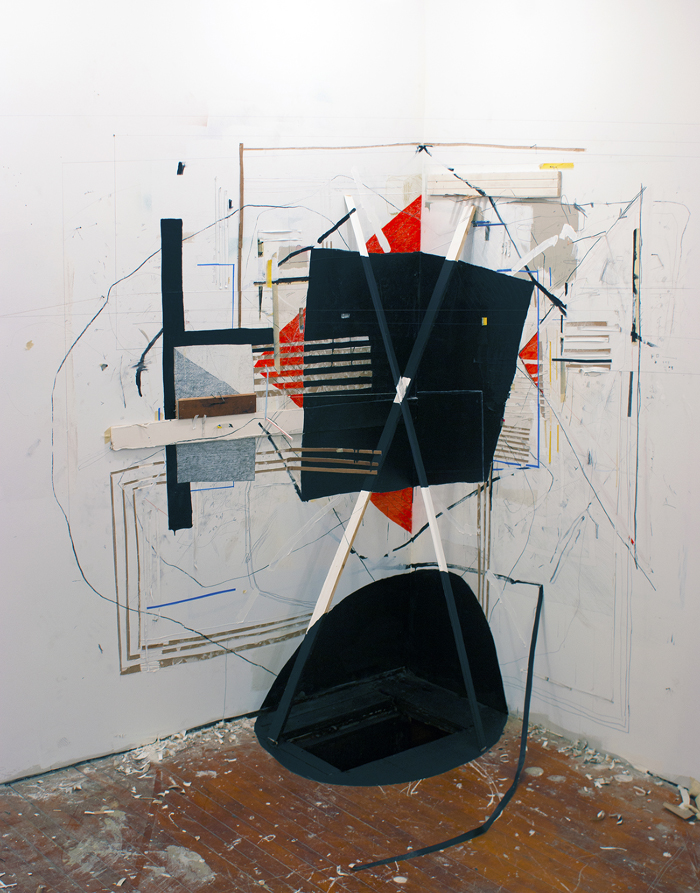Installing the Surface into Space
In “Politics of Installation” Boris Groys defines installation art practices against standard exhibition practices based on how art viewers relate to space and how certain treatments of space relate to commodification. For Groys standard exhibition practices reduce the body to a floating eye observing distanced objects suspended within a neutral zone, like commodities in a shop window. This type of space functions in opposition to installation, which generally creates a world that visitors then enter by relinquishing their exteriorized observational position. Essentially, installation promotes an embodied experience interwoven into the display itself, so that no object is constructed by being held at eye’s length.
As such, standard exhibition practices can be said to suffer from some of the same issues as photography, namely: both make images more or less disconnected from their circumstances, both perpetuate the construction of a fictive, neutral viewing space, and both tend to disembody the eye—all of which is interrelated. Conversely, installation practices must somehow exist on the other side of these entanglements, beyond the photographic. But to think closely about installation means to question whether it truly exists separately from the distance that defines standard exhibition practices. Do pure installation and pure museum style displays exist? The problem may not be how installation practices differ from standard exhibition practices, but how these two approaches have redefined each other, how they are in exchange despite being in opposition.
We can think through these issues by examining a photograph depicting Mung, part of an installation by Gregory Bae mysteriously titled threeXVIII13-III31thirteen. One thing that is noticeable, after some scrutiny, is the effect of the camera’s placement. The selective vantage point creates continuity in the black rectangular shape that appears to exist as a whole, but on several surfaces simultaneously. The same is true for the black oval that is distributed across the floor, walls, and leaning sticks. Here, Bae’s approach to installation, heavily pulling from drawing and painting, flattens space out, essentially reducing the heterogeneousness of a region into the uniform surface of a picture plane, something best observed from a designated position.
Yet, having visited Bae’s installation in person I know that it clearly invokes embodiment, forcing the eye back into the socket, attaching the head to the neck, and the neck to the torso. One looks as much with the legs as with the eyes, first bending at the knee to investigate some minutia, then standing afar taking in an overall structure. The extreme physicality of viewing, shuffling into and out of the work, undoubtedly defines looking according to a spatial experience. However, through these calculated moments of flatness, the work questions any clear distinction between art as a distant object verses art as an immersive environment. Essentially Bae’s work is not simply this or that—distanced viewing or absorbing environment—but rather this and that, insofar as the work both encourages and negates being a picture plane, insofar as the work both encourages and negates its spatiality.




Dilettante Mail
Get updates from us a few times a year.